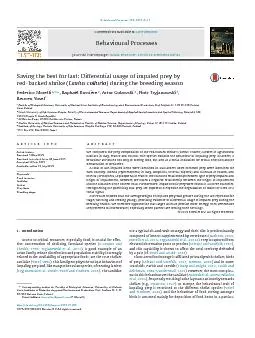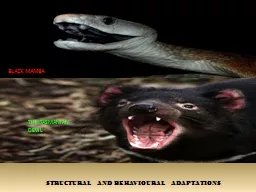PDF-Behavioural Processes 119 (2015) 6
Author : cheryl-pisano | Published Date : 2017-01-10
Contentslistsavailableat ScienceDirect Behavioural Processes journalhomepage the best for last Differential usage of impaled prey byredbacked shrike Lanius collurio during the breeding seasonFede
Presentation Embed Code
Download Presentation
Download Presentation The PPT/PDF document "Behavioural Processes 119 (2015) 6" is the property of its rightful owner. Permission is granted to download and print the materials on this website for personal, non-commercial use only, and to display it on your personal computer provided you do not modify the materials and that you retain all copyright notices contained in the materials. By downloading content from our website, you accept the terms of this agreement.
Behavioural Processes 119 (2015) 6: Transcript
Download Rules Of Document
"Behavioural Processes 119 (2015) 6"The content belongs to its owner. You may download and print it for personal use, without modification, and keep all copyright notices. By downloading, you agree to these terms.
Related Documents














